
- News
- Basics
- Products
- JP Job shop
- Exhibition
- Interview
- Statistic
- PR
- Download
- Special contents
Exhibition
December 13, 2019
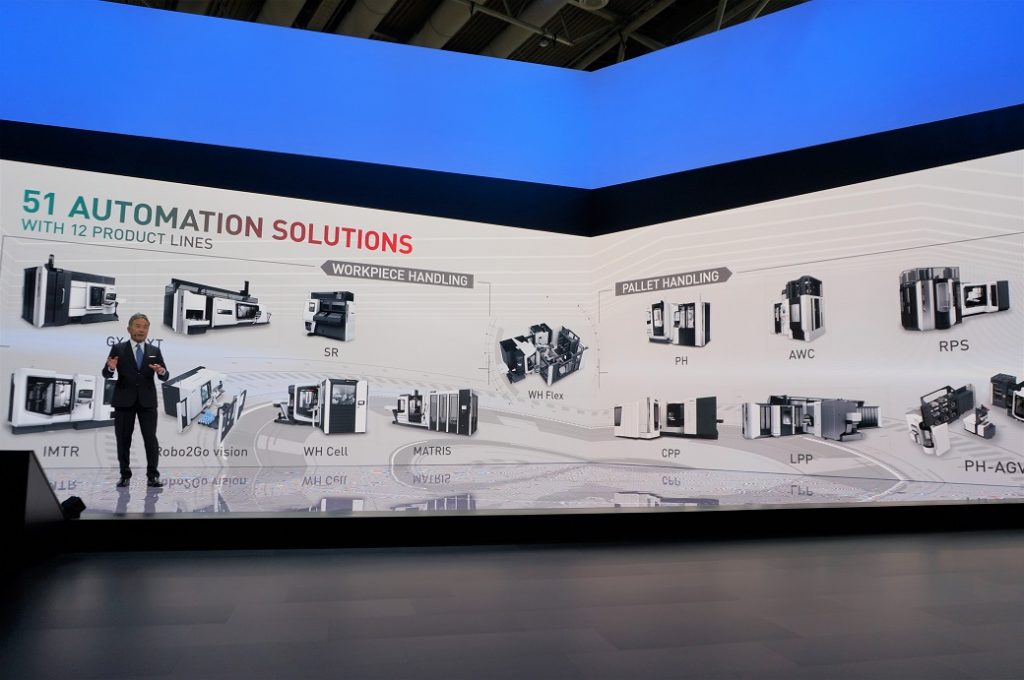
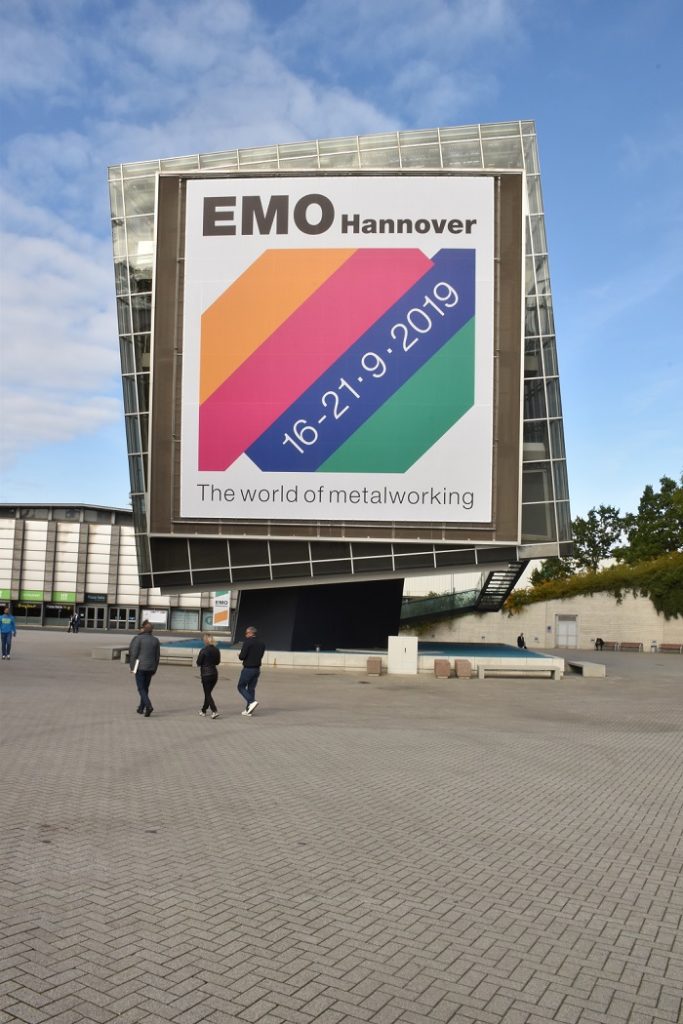
EMO Hannover 2019, the world’s premier trade fair for the metalworking industry, was held over six days from September 16 to 21, 2019, at the Hannover Fairground in Lower Saxony, Germany. At the exhibition, many companies showcased solutions for automation and labor saving, in response to the worsening labor shortage in the European manufacturing sector. Visitors were particularly interested in cutting-edge technologies such as the Internet of Things (IoT) and metal additive manufacturing (AM).
Reporters from SEISANZAI Japan visited the venue and interviewed several Japanese FA builders. This article analyzes the strategies Japanese companies adopted to respond to the serious labor shortage in the European market.
A total of 2,211 companies from 47 countries and regions participated in EMO Hannover 2019. The total exhibition area reached approximately 180,000 square meters, about 3.6 times the size of JIMTOF2018. EMO is one of the world’s four largest machine tool trade fairs.
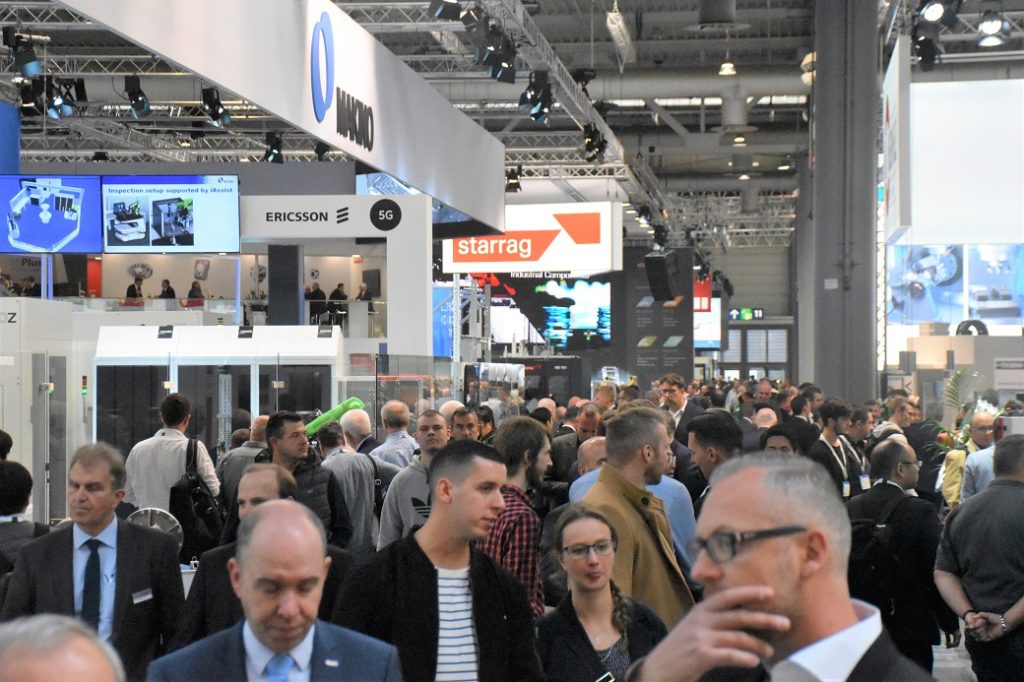
The event took place during a period of global economic slowdown, and the European market was no exception. According to CECIMO (European Association of the Machine Tool Industries), member orders by June 2019 had fallen by approximately 20% year-on-year.
Despite the slowdown, many exhibitors showcased machine tools integrated with industrial robots and automation equipment. One Japanese exhibitor explained, “Although the business climate in Europe is weak, investment in automation is still active. In fact, most of the current capital investment seems to be limited to automation-related projects rather than proactive expansion.”
Labor shortages—especially in former Western European countries—have reached levels similar to those in other advanced economies such as Japan. As a result, many exhibitors proposed automation systems combined with labor-saving software solutions. The versatility and adaptability of machine tools and peripheral devices have increased, requiring users to make highly tailored decisions about what to produce and what combination of equipment and software to use.
However, the abundance of digital tools on display at EMO Hannover 2019 also made it difficult for users to select solutions. Not only machine tool and NC builders, but also tool and measuring equipment manufacturers, are positioning themselves as platform and application providers, all seeking to deliver the “killer app” for digital manufacturing.

DMG MORI dedicated all of Hall 2 to promoting digitalization and automation, with a focus on 5-axis machining centers and multi-tasking machines.
President Dr. Masahiko Mori stated,
“Looking ahead to the next 10 years, many of the machines in use today were introduced more than 20 years ago. These older machines produce considerable CO₂ emissions. The move to replace them with compact, high-efficiency models like 5-axis or multi-tasking machines will only accelerate.”
A key highlight of DMG MORI’s booth was TULIP, a no-code platform developed at the Massachusetts Institute of Technology (MIT).
Dr. Makoto Fujishima, Executive Director of DMG MORI, explained,
“Even without programming knowledge, users can create custom applications to manage their production processes.”
With a simple drag-and-drop interface, users can create tailored process management systems and easily integrate them with sensors and peripheral devices.
Christian Thönes, Vice President of DMG MORI, added,
“Although the market is going through a winter-like phase, this is not the time to wait for spring. Now is the time for innovation, as the manufacturing industry is undergoing major transformation.”
Okamoto Machine Tool Works stayed true to its strengths of high accuracy and high efficiency, while also emphasizing automation and labor-saving proposals.
President and CEO Tsuneyuki Ishii noted,
“What European customers want is similar to Japan: high-quality machines, even if they come at a higher price.”
Norbert Mueller, Senior Sales Manager at Okamoto’s European office, commented,
“While the overall European market is slowing—especially in Germany—the aerospace and medical sectors remain strong. Even in difficult times, there are always segments with growth potential.”
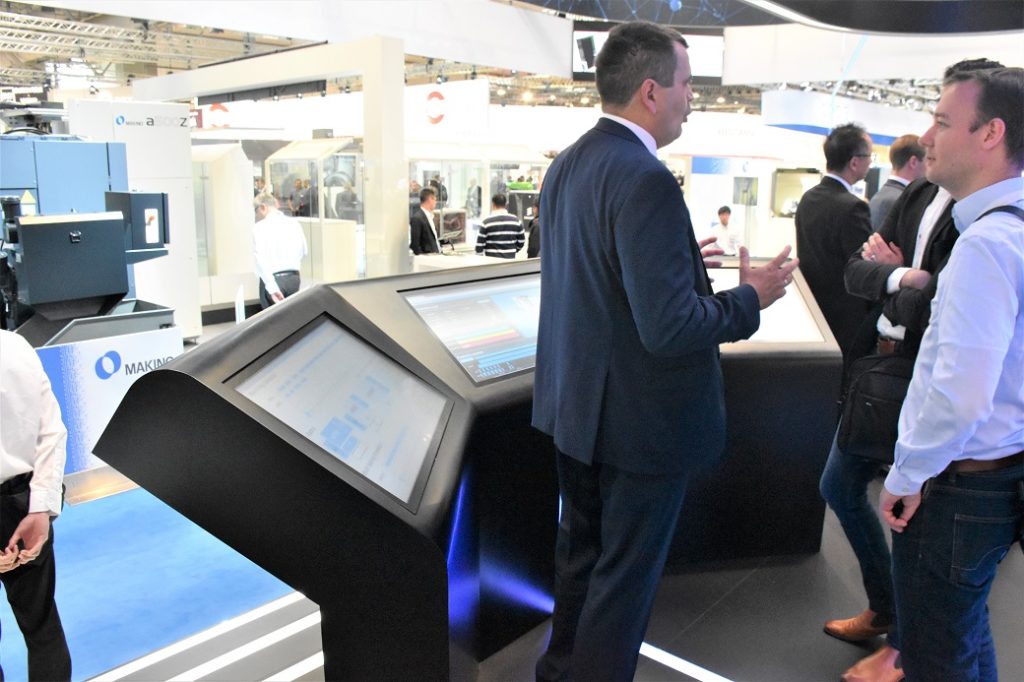
Makino Milling Machine exhibited its iAssist system, combining a FANUC collaborative robot with an original automated guided vehicle (AGV). Demonstrations were held in a space modeled after a tool room, where iAssist autonomously avoided obstacles, transported tools, and attached tool holders to machines.
The system includes a 5G-compatible communication module, co-developed with Swedish telecom company Ericsson.
Makino also introduced its digital twin platform. Once CAD data of a workpiece is registered, the system automatically generates a machining path, runs a digital simulation, and calculates an optimal production plan based on factors such as lead time and work-in-process minimization. Once the plan is finalized, it is executed with the machine tool and iAssist working in synchronized motion under 5G control, all directed by the production management system.
President Shinichi Inoue stated,
“Introducing digital twins allows automation of production management tasks that previously relied on worker intuition. This enables people to focus on tasks that only humans can do.”
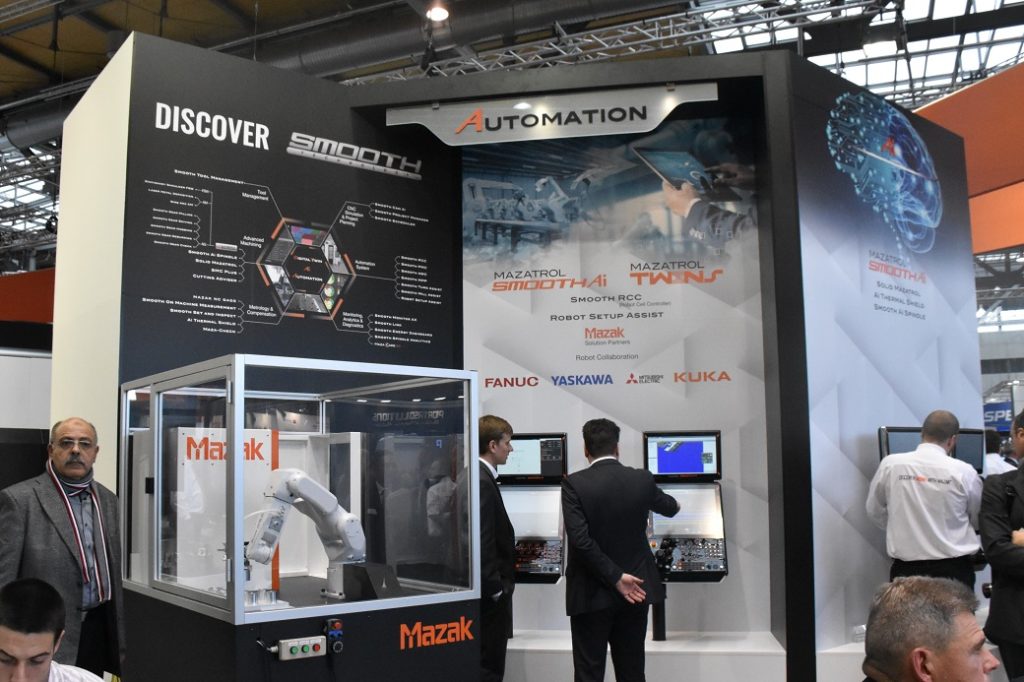
Yamazaki Mazak announced a new concept called “Mazak Solution Partners” to promote closer collaboration with robot and software manufacturers.
Under this initiative, Mazak opens its machine tool interface to partner companies, making it easier to build automated cells using robots and to link setup support software through office PCs.
Executive Officer Kazuya Horibe explained,
“Digital twins are not just about simulation. To truly achieve automation, robots, software, and machine tools must be connected to build a system that can automatically compensate for gaps that are difficult for humans to identify.”
▶ Continue to (2/2)
EMO2019: What strategies Japanese FA builders took for the European market where labor shortage is severe?(2/2)
Source: SEISANZAI MARKETING Magazine November 2019 issue
September 4, 2019